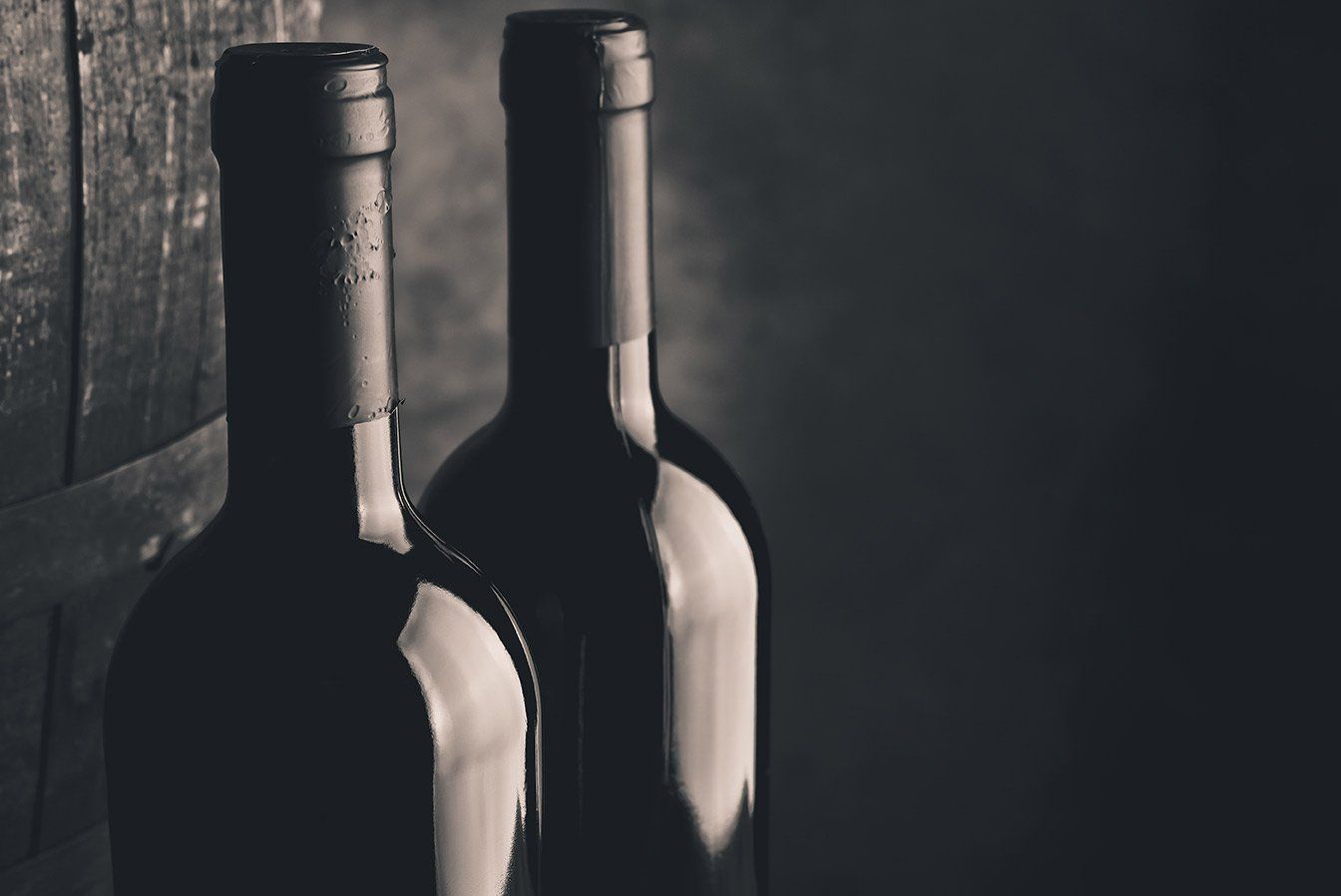Not exactly. While nothing extraneous is added to the wine to make it fragrant, “aromatic” grape varieties tend to contain naturally higher levels of certain molecules called monoterpenes that are also naturally found in botanicals.
So, if you love the smell of jasmine, orange blossom, rose, or violet— you might want to try one of these wines next time you’re out for drinks!
#1 Rosé: don’t be fooled by its peachy pink hue— most traditional rosés are not overly floral. However, these days there are so many styles on the market made from all different kinds of grapes. If you know which varieties to look out for, you’ll be able to pick a rosé that possesses an enchanting floral bouquet. Mataro, pinot noir, and grenache grapes will often impart a subtle floral note to a dry rosé—but if you’re looking for something with a little more sweetness, try a rosé made from white zinfandel or moscato.
#2 Riesling: made in both dry and sweet styles, riesling is a super versatile grape variety that often displays notes of jasmine, orange blossom, and honeysuckle alongside primary fruit flavours of green apple, lime, and apricot. Clean, crisp, and refreshing, riesling is the perfect accompaniment to any spring evening.
#3 Gewürztraminer: typically a little on the sweeter side, this originally German grape variety is brimming with flavour. Gewürz—as it’s colloquially referred to—is renowned for displaying heady notes of rose petal on the nose while boasting a palate full of fresh fruit flavours—think lychee, marmalade, guava, and pineapple!
What about reds? Never fear, while whites and rosés do tend to take centre stage at this time of year, they don’t have a monopoly on floral aromatics. Northern Italian reds such as Nebbiolo or Lambrusco often display notes of violet or rose that adds freshness, lift, and dimension to primary fruit flavours.
Happy Spring Sipping!
Alexandra Douglas and the Witches Falls Winery team
MORE SCENIC NEWS
-
COMMUNITY CAMERA ALLIANCE – YOUR CHANCE TO HELP
Mar 28, 2024ButtonIt's essential for community members to remain vigilant and take steps to safeguard their properties and vehicle...
-
GALLERY’S $30,000 MAJOR ART AWARD RETURNS
Mar 28, 2024ButtonThe award, named after the sacred mountain which the Gallery overlooks, is open to artists living across the...
-
ANNE HOITINK – APRIL 2, 1945 – MARCH 15, 2024
Mar 28, 2024ButtonMigrated to Australia on 29 November 1952, aged 7 years. Going directly to the suburb of Reid in Canber...
-
KERRI: AN HONOUR TO FILL THE ROLE FOR DIVISION 2
Mar 28, 2024ButtonDuring the pre-poll part of the campaign, I was very grateful for the opportunity to be able to meet an...
-
DO HOP IN FOR A NEW MONTE LUPO EXHIBITION
Mar 28, 2024ButtonMonte Lupo was established by Multicap in 1991 to provide meaningful employment to people living with di...
-
GREAT SUCCESS FOR LITTLE ATHLETES
Mar 28, 2024ButtonRuby, Lily, Talia, Torah, Hugo, Leiawyn, Aric, Dean, Mitchell, Harvey and Noa; you all should be so proud ...
-
A NEW CHAPTER FOR WOLVES BASKETBALL
Mar 28, 2024ButtonAs the sun sets on an incredible experience, it's time for me, Adam Chanter, to say farewell as the Pre...
-
GRAND OPTIONS CATER TO MOST NEEDS AND TASTES
Mar 28, 2024ButtonFor weddings, services can be held in The Old Church, which stands as a proud member of architecturally sig...
-
BREACH OF CODE: RULING ON MAYOR CHRISTENSEN RAISES MORE VOTER CONCERNS ON ELECTION EVE
Mar 14, 2024ButtonAdditionally, Christensen is to bear his legal costs, with a warning that any future infractions will be classifie...
-
THE LONG ROAD SPORTS CENTRE AND REGIONAL SPORT - WHERE DO YOU STAND
Mar 14, 2024ButtonThe SRRC Sports strategy 2010-2020 is to be shortly superseded by the 2024 – 2034 SRRC Sports Strategy....
LOCAL BUSINESS
COLUMNS
-
Beauty & Wellness
ButtonWriter: Rebecca Mander - Naturally Cos
-
Community Care
ButtonWriter: Geoff Marshall
-
Embrace
ButtonWriter: Jaap Vogel
-
Food for Thought
ButtonWriter: Dylan Gittoes
-
Hooked on Books
ButtonWriter: Friends of TM Library
-
Living with Dogs
ButtonWriter: Pam Brandis (Dip. Canine Prac.)
-
Nature Notes
ButtonWriter: Nadia O’Carroll
-
Pastor Kim
ButtonWriter: Pastor Kim Dale
-
Physio Talk
ButtonWriter: Neil Bell (Tamborine Mountain Physique)
-
Police News
ButtonWriter: Sgt Mark Shields
Officer in Charge
North Tamborine Police
-
Politics
ButtonWriter: Local Councillors and Representatives
-
Relationships
ButtonWriter: Linda Gray
-
The Mtn Midwife
ButtonWriter: Bree Lowing (Registered Midwife)
-
Travelling Places
ButtonWriter: Travelling Places Tamborine Mtn
-
Wine chat
ButtonWriter: Imogen Mulcahy
-
Yoga Under the Bodhi Tree
ButtonWriter: Margot Wagner
Your Local Paper
to read, keep & share

Your Local Paper
to read, keep & share
CONTACT
PO Box 118, North Tamborine Qld 4272
Phone: 0407 671 286
Email:
news@tmnews.com.au
ads@tmnews.com.au
Design by BjornSchmal.com


















